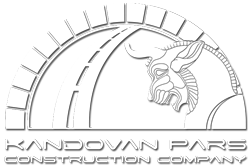Value Engineering
In today’s economic environment, increased competition for project work quality and budgetary resources lead to the fact that companies and agencies face a profound challenge. The projects must be done and performed better than ever. Therefore, the procedure which can improve efficiency and profit of the organization is valuable.
Since Kandovan Pars Company always faces new and complex projects of tunnels, roads, railroads, industrial buildings, etc. it seeks ways to improve the efficiency and quality of performance. It finds Value Engineering (VE) as an effective management tool for implementation of its projects. Indeed, VE looks for alternatives to the original design that might effectively increase the value or reduce the cost of the project.
Numerous other terms (value management, value analysis, etc.) are also used when referring to VE. While there are subtle differences among these terms, they all refer to generally the same process.
Value Engineering, a systematic and structured approach, improves projects, products, and processes. VE is used to analyze manufacturing products and processes, design and construction projects, and business and administrative processes. It helps to achieve balance between required functions, performance, quality, safety, and scope with the costs and other resources necessary to accomplish those requirements. The proper balance results in the maximum value for the project.
Value = Function/Cost
Value is the reliable performance of functions to meet customer needs at the lowest overall cost.
Function is the natural or characteristic action performed by a product or service.
Cost is the expenditure necessary to produce a project, service, process, or structure.
The systematic and structural approach comes from the VE job plan. A SAVE standard job plan consists of six phases:
- Information Phase: Gather information to better understand the project.
- Function Analysis: Analyze the project to understand and clarify the required functions.
- Creative Phase: Generate ideas on all the possible ways to accomplish the required functions.
- Evaluation Phase: Synthesize ideas and concepts to select feasible ideas for development into specific value improvement.
- Development Phase: Select and prepare the “best” alternative(s) for improving value.
- Presentation Phase: Present the value recommendation to the project stakeholders.
- Implementation Phase: management and the project team must digest and agree upon the VE proposals to be implemented, and then how and by when the implementation will occur.

